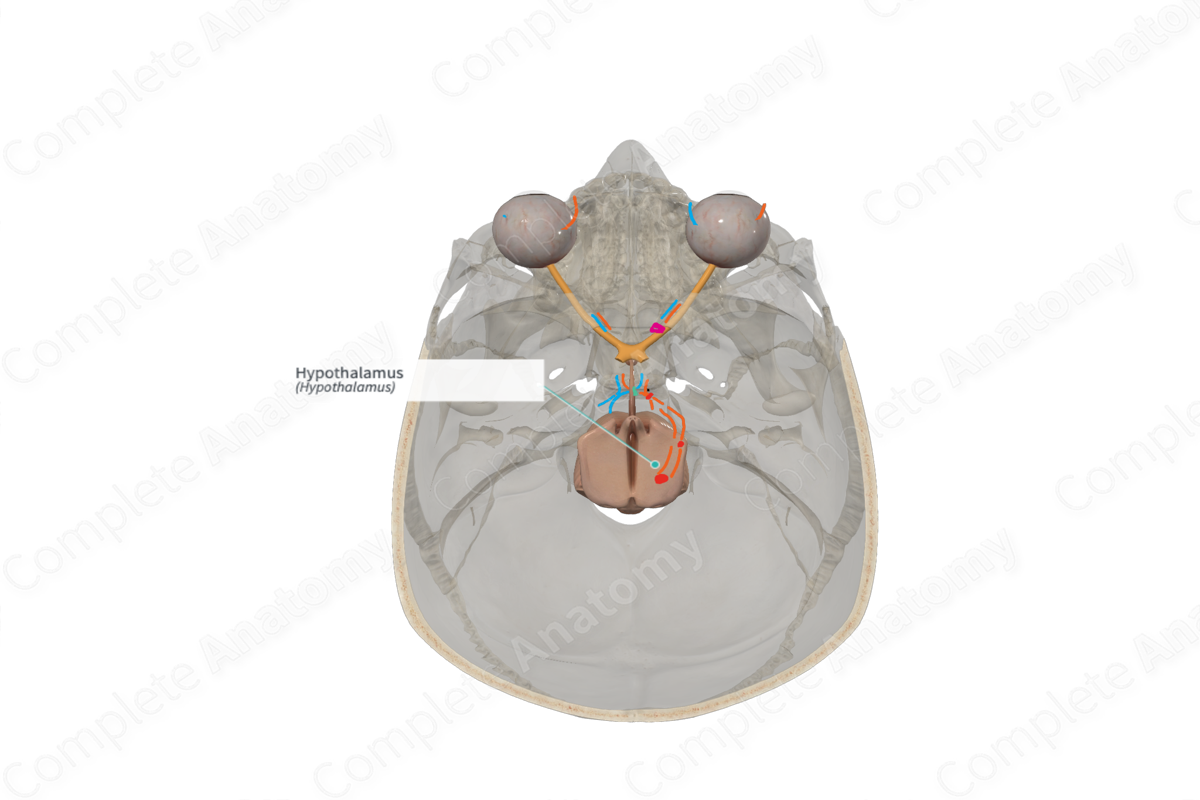
Quick Facts
This structure lies medial to the internal capsule and subthalamus. It consists of anterior, intermediate, lateral, posterior and dorsal hypothalamic areas with their specific nuclei.
The adenohypophysis and hypothalamus form the hypothalamohypophysial portal system which secretes important endocrine hormones. It has afferent and efferent connections with the neurohypophysis, mesencephalon, limbic system and the cerebellum.
The hypothalamus is the center for feelings, instincts, motivational states and emotional reactions. It also plays an important role in regulating the internal environment of the body, especially that of body temperature, blood pressure and circadian rhythm.
Related parts of the anatomy
Learn more about this topic from other Elsevier products
Hypothalamus: What Is It, Location, Function, and More

The hypothalamus is a small part of the brain that plays an important role in homeostasis (the bodily state where conditions are optimal Learn with Osmosis
Hypothalamus

Puberty is a maturational process of the hypothalamus–pituitary–gonadal axis resulting in the pubertal growth spurt and development of sex characteristics.



